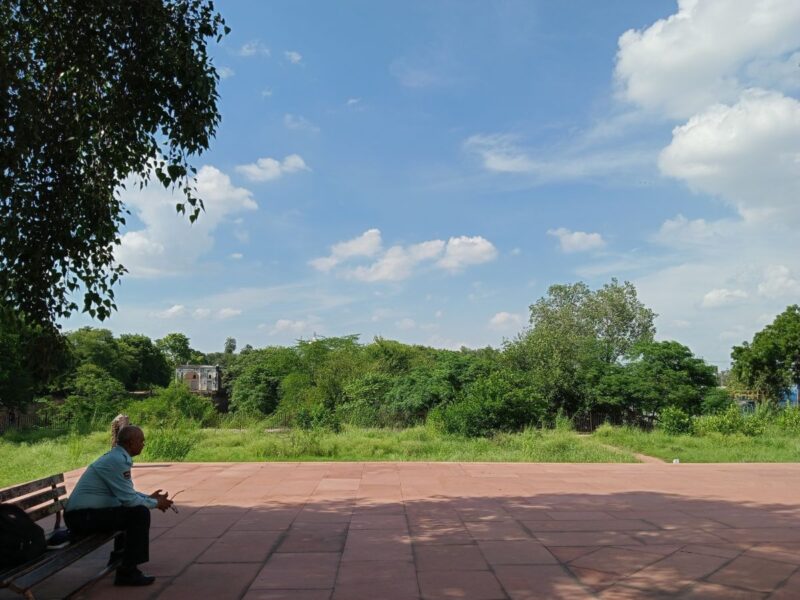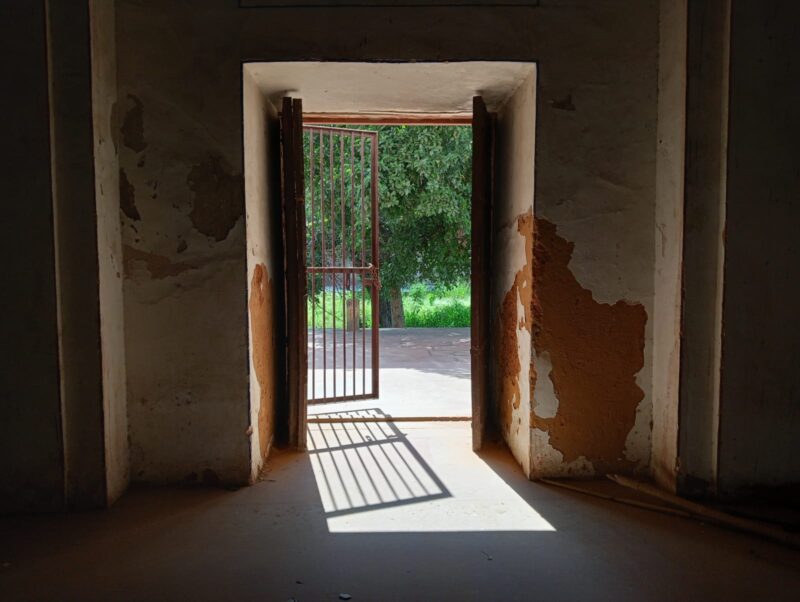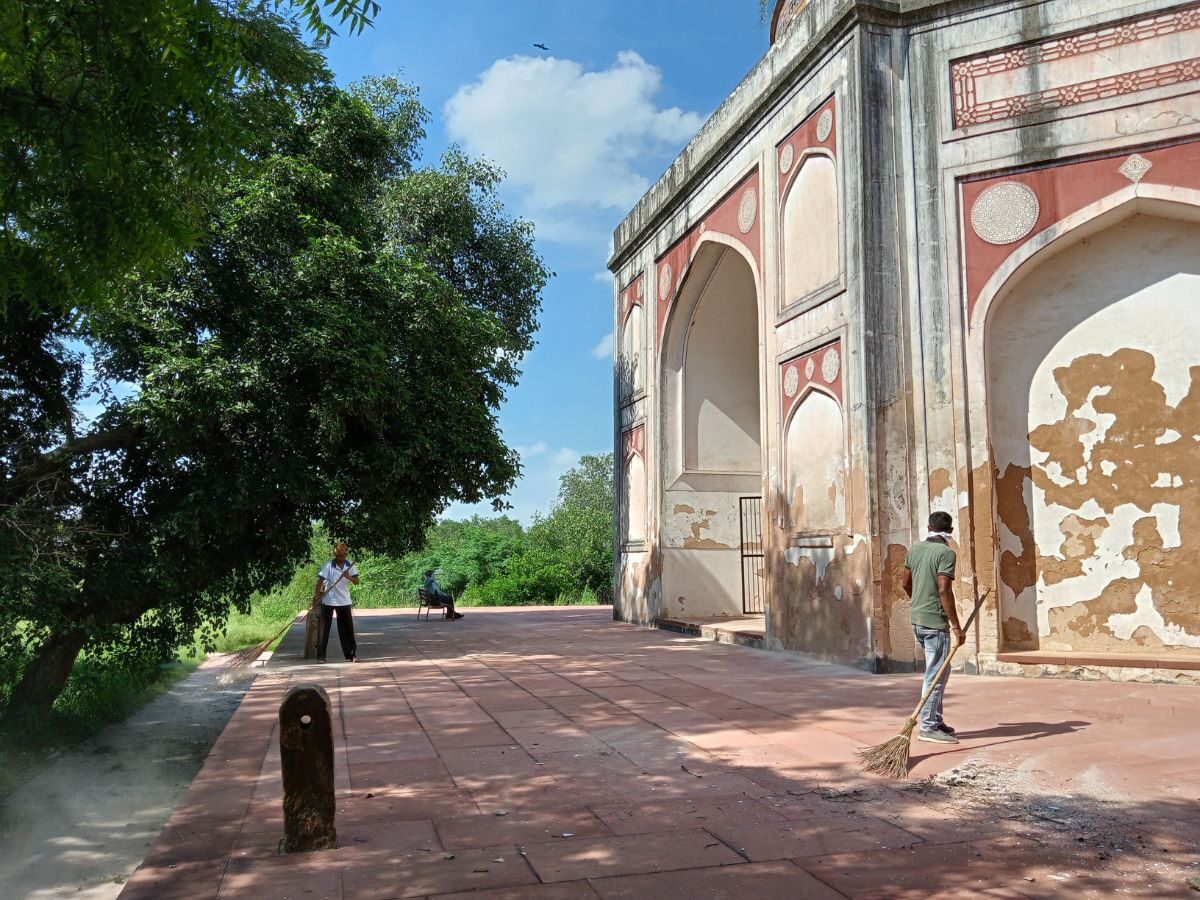Delhi is dotted with monuments. As one takes a stroll in the city, there is always a tomb or a turret standing on the sideway with all its historical glory. While there are 174 monuments of national importance recognised by the Archeological Survey of India (ASI), the city offers an exhibition of architecture in every nook and corner. And to protect these, hundreds are employed to perform the humongous task of security.
Although the job may seem easy because of its 8-hour shifts, it involves the crushing weight of paltry wages, pay cuts, delay in salaries and lack of amenities or transport. A deduction is made from the caretakers’ wage in case of loss of property from the premises.
But come rain or shine, they show up for work – to guard Delhi’s rich heritage.
Only two monuments, the Red Fort in Delhi and the Taj Mahal in Uttar Pradesh, are manned by the Central Industrial Security Force (CISF). The rest that attract hundreds of visitors every day are guarded by private security agencies who are hired by a third party directly employed by the ASI.
Frugal life, high fines
While gigantic monuments like the Humayun’s Tomb have scores of guards constantly keeping a watch on visitors, several obscure ones are looked after by only two caretakers, sometimes only one.
Entering the tomb of Abdul Rahim Khan-e-Khanan, a little-known monument in Nizamuddin East, one is welcomed by a lush garden beside which is the guard’s cabin. The mausoleum was built by the poet Khanzada Mirza Khan Abdul Rahim, one of the popular Navratanas of Emperor Akbar, for his wife. This was the first-ever Mughal tomb built for a lady and her husband was also buried here in AD 1627.
When Patriot visited the monument, only one person was in charge of the ticket counter and also keeping a watch on the monument.
“It’s like a squint situation. This fort is little-known, yes, but it is still an unfairly difficult task to perform both these responsibilities together. You cannot miss out on a single visitor and also keep one eye out for who is doing what inside the premises,” the guard at the ticket counter said. He also added that if one person gets in without a ticket, the company deducts 10 times the ticket amount from his salary.

The cruel rule exists “because they say, what if we allowed not one, but 10 people? It’s so unfair and uncalled for,” he says. “When free entry for all visitors was announced, there was a rush of people here. Two of us were posted here. During closing time, we discovered that a faucet was missing: Someone broke it off and took it home. Rs 2,000 was deducted from my salary as fine. It was crushing”.
He is the sole breadwinner and draws a salary of Rs 15,000 per month to run a family of five.
Fraught situations
“Sometimes, when we catch visitors writing on walls or scratching or trying to damage anything, we end up in physical fights because they assault us. The situation only settles down once the police intervene”, said a caretaker at Purana Qila near Delhi Zoo.
An ASI source told Patriot that it does not directly employ security agencies under whom the guards work, but a third party does that. “Monuments under ASI’s control have artefacts that are priceless. In India, there are some who have no respect for these and encroach upon them. There are thefts and there must be accountability. We all have to justify our jobs and are made accountable for what happens under our watch,” a source said.
When asked about the lack of manpower in some of the monuments, ASI spoke of routine surveys conducted to understand the requirement of caretakers based on the footfall of visitors.
“We are supposed to receive our salary on the fifth day of every month, but often it gets delayed as late as the 20th. But our responsibilities don’t wait. We have to buy ration on time, feed our families, and pay for our children’s education. And then they also deduct money,” the guard at the Abdul Rahim Khan-e-Khanan tomb rued.
As one enters the Nila Gumbad, an azure tomb inside the Humayun’s Tomb complex, the spotless platform is unmissable despite dried leaves constantly falling on its surface. In sweltering heat, two cleaners are keeping the area spick and span round the clock. Employed on a meagre wage of Rs 5,000, they say they often receive “two-three months of salary together”.

Spotless enclosure inside Nila Gumbad
No night transport
For those working in the evening shift (2 pm to 10 pm), going home after duty is often not an option because “most buses are already stationed.” Others take a long, lonely ride home on a bicycle.
“By the time we leave, which is around 10:30 pm, even shared tempos are hardly there in sight. Autos and metros are out of our reach, so some of us who come from far away usually spend the night inside the monuments and go home early in the morning. This way we also miss family events,” says a guard at Humayun’s Tomb.
“A few come from Anand Vihar on a bicycle because we cannot afford anything else,” said another. The distance to Nizamuddin is about 16 km, quite a long haul.
“The only perk we have been given is our family’s free entry into the monument we work at. I don’t know what to do with that,” he adds.
While ASI sources confirmed that there are provisions for night-stay inside some monuments for security personnel, they state that the responsibility of transport is not theirs, but that of the security agency.
“But we will review these grievances if people manning our monuments are facing such problems,” an ASI source said.
As per the supervisor in Humayun’s Tomb, the shifts in all the monuments are divided into three parts: 6 am to 2 pm, 10 am to 6 pm and 2 pm to 10 pm. The supervisors are Group C staff of the Central government after they clear the MTS examination. It’s a transferable job.
“While security guards are largely employed for protecting monuments and keeping a watch on them, our job is to monitor what needs renovation. For example, we review every small corner of the monument where we are currently employed and scrutinize each part to file a report to the government on the budget required. Recently, we fixed all the entrance platforms for the ease of disabled people,” he says.
“Throughout Covid waves, when most of India was under lockdown, we came to duty every day to protect our monuments –we supervisors and all the security guards you see,” he remarks.
*Names changed to protect identities
For more stories that cover the ongoings of Delhi NCR, follow us on:
Instagram: instagram.com/thepatriot_in/
Twitter: twitter.com/Patriot_Delhi
Facebook: facebook.com/Thepatriotnewsindia





